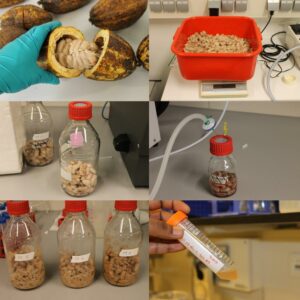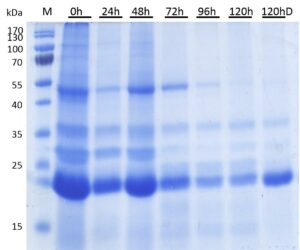Cocoa Fermentation Analysis using Proteomics and Peptidomics
The process of chocolate production entails a number of different processes, each of which contribute to the development of chocolate flavour in a unique way. One of the major processes involved in the development of chocolate flavour precursors is cocoa bean fermentation which takes place on the farms where the beans are harvested. Even though fermentation has been carried out ritualistically over the last few centuries, with different means of fermentation being practiced, there is only a shallow understanding of how cocoa bean chemistry changes over the process, what key flavour precursors are being produced and what influences their production. Cocoa bean fermentation is considered a very different form of fermentation as compared to making bread, yoghurt or alcoholic beverages, and therefore cannot be analysed in the same way.
As part of the Cocoa Metabolomics (COMETA) project, the main aim of my work is to develop model lab-scale cocoa bean fermentation systems for a better understanding of the process of fermentation in order to replicate a typical fermentation as done on the farm except under controlled laboratory conditions. This involves testing out various parameters, and comprehensive analyses in terms of:
- Proteomics using SDS-PAGE, 2D-PAGE, MALDI-ToF imaging (matrix-assisted laser desorption and ionization – time of flight) and protein quantification methods
- Peptidomics using UPLC-QToF coupled to mass spectrometry and other computational methods
- Fermentation product analyses using HPLC
- Yeast microbiome analysis
Figure 1. Different experimental steps during an in vitro fermenation of fresh cocoa beans
Figure 2. Typical protein profiles of cocoa bean samples during fermentation determined by SDS-PAGE


